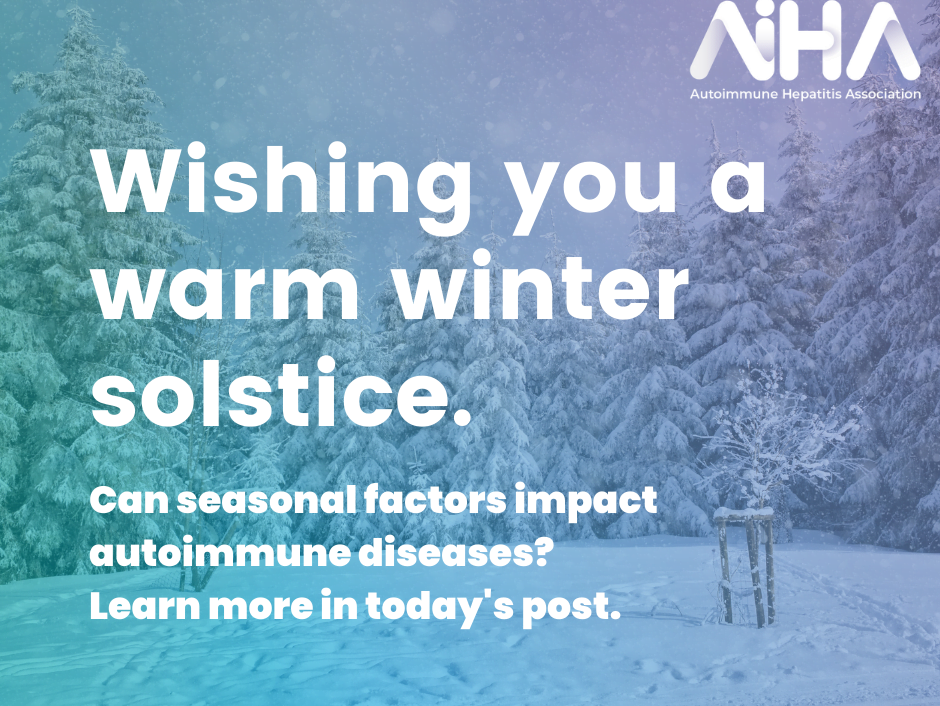By The Autoimmune Hepatitis Association

On the first day of winter, we share more about a unique phenomenon observed in some autoimmune diseases: how the change of seasons can play a role.
Is there a time of year that patients are more likely to be diagnosed with autoimmune hepatitis (AIH)? The answer: We don’t know, but it’s possible.
This is a challenging question not only because of the rarity of AIH but also because the diagnosis of AIH may be made months (or longer) after “disease onset.” Knowing exactly when AIH starts is nearly impossible. Many believe the development of intolerance by the immune system at the heart of AIH is gradual, eventually culminating in increased liver cell injury, abnormal liver tests, and other symptoms.
The question of timing of onset in AIH is an important one, as this understanding could help clarify what causes disease, how to prevent disease, and even how best to treat it. There have been seasonal trends seen in other autoimmune diseases, and this has led autoimmune disease researchers to strongly consider the environment as an important trigger (or cue) that may be playing a big role in autoimmune disease development.
A few examples (there are many) that point towards the importance of seasonal factors in autoimmune disease development can be found in vitamin D levels in multiple sclerosis and viral infections in type 1 diabetes.
Multiple sclerosis (MS) and vitamin D: MS is an autoimmune inflammatory disease, targeting the myelin of the central nervous system. Studies have shown that maternal sun exposure and associated decreased levels of vitamin D may increase the risk of disease development in patients that are born during the spring.
Further, higher vitamin D levels have been associated with lower risk of MS development and may indicate why there is often a peak in MS diagnosis in winter. Finally, ultraviolet light is essential for vitamin D production and is usually higher in lower latitudes. MS risk increases as you move north from the equator.
Type I diabetes mellitus (T1DM) and viruses: The presence of the autoantibody found in T1DM has been shown to appear more frequently in the fall and winter. Coxsackievirus A and B, Echovirus and Rotavirus are viruses that peak in the late summer and fall and have the ability to attack the cells in the pancreas that produce insulin.
In AIH specifically, low vitamin D levels have been linked to more challenges with control of liver inflammation. From a virus perspective, several viruses have been associated with AIH, yet many don’t have necessarily strong signals of seasonal variation (viral hepatitis A, B, and C, HIV, CMV, Parvovirus B19, and Epstein Barr Virus). It is clear that AIH can also occur in the absence of these phenomena, and comprehensive studies that examine other environmental contributions to disease are needed.
